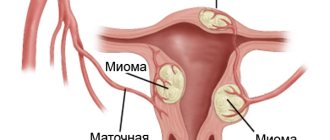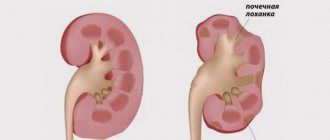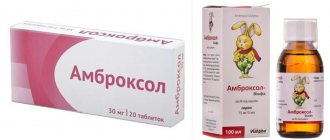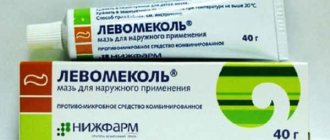Editor
Maria Bogatyreva
Doctor of the highest category, teacher
Purulent bronchitis is an inflammatory lesion of the mucous membrane (endobronchitis) or all the membranes of the bronchi (panbronchitis) of large, medium and small caliber, characterized by the secretion and discharge of purulent exudate. The disease can have an acute or chronic course. The etiology is most often due to bacterial infection. The main signs of purulent bronchitis are a wet cough, the production and discharge of thick yellowish or greenish sputum, fever, and shortness of breath.
According to ICD-10, acute purulent bronchitis is considered under the code J20, the chronic form is designated by the code J42.
Causes and mechanism of development
Purulent damage to the bronchi can be a primary independent disease, when the mucous membrane is initially attacked by harmful agents.
Also, the formation of inflamed fluid in the bronchi may be a secondary phenomenon that develops when there are foci of inflammation in other parts of the respiratory tract.
The etiology (causal factors) of purulent bronchitis is different and diverse. The disease can be started by infectious microorganisms and non-infectious factors of endogenous (internal) or exogenous (external) origin.
Non-infectious causes of exogenous nature and provocateurs of purulent bronchitis include:
- household pollutants in high concentrations;
- industrial air pollutants;
- inhalation of tobacco smoke;
- unfavorable climatic and weather conditions (temperature changes, overheating of the body, hypothermia).
The above aspects lead to irritation and damage to the connective tissue-epithelial membrane of the bronchus, as a result of which the microbial flora easily penetrates the organs of the respiratory tract.
The main role in the occurrence of purulent bronchitis belongs to bacterial infection , namely:
- Staphylococcus aureus (Staphylococcus aureus);
- Pseudomonas aeruginosa (Pseudomonas aeruginosa);
- pneumococcus (Streptococcus pneumoniae);
- hemophilus influenzae (Haemophilus influenzae).
The chronic form of the disease is caused by the presence of untreated foci of infection in the body (chronic tonsillitis, inflammation of the paranasal sinuses). The acute purulent form is most often the result of improperly administered antimicrobial therapy for bacterial lesions of the respiratory tract.
Important! The disease can result from the use of antibiotics, to which the microflora has developed insensitivity.
As a result of prolonged irritation of the bronchial tree, the secretory function of cells is activated, the formation of inflamed fluid increases, and the composition and structure of the exudate changes. Due to the deterioration of mucociliary clearance (the process of self-purification), the rate of reproduction of pathogens in the bronchial tree accelerates. The resulting pathological secretion acquires a purulent character: the exudate becomes viscous, yellowish or greenish. The mucus is often very thick and difficult to cough up.
The principle of purulent bronchitis
Frequent episodes of acute respiratory viral infections contribute to a decrease in local reactivity. Deterioration of local immunity is observed after seasonal diseases caused by viruses:
- influenza (Influenza A, B);
- parainfluenza (Respirovirus);
- rhinovirus (Rhinovirus);
- respiratory syncytial virus (Human orthopneumovirus).
Endogenous factors predisposing to the development of purulent lesions of the bronchi include:
- a decrease in the primary and secondary immune response, both cellular and humoral, in old and senile age;
- dysfunction of the immune system in acute alcohol intoxication and alcoholism;
- the formation of numerous ketone bodies that suppress immunity in obesity;
- vitamin deficiency;
- immunodeficiencies resulting from HIV and AIDS.
Treatment methods, consequences and prevention of the disease
Complex treatment of purulent bronchitis includes not only conservative methods, but also physiotherapeutic and traditional methods. The last two methods cannot be the main ones; they are used only as additional therapy.
The main treatment is carried out through antibacterial therapy, which includes broad-spectrum antibiotics (Ceftriaxone, Azithromycin).
Antibiotics help relieve inflammation, rid the respiratory tract of pathogenic microorganisms, improve sputum discharge, relieve swelling and restore the bronchial mucous membranes.
As a medicinal addition to therapy include:
- inhaled mucolytic drugs (Mukomist, ACC);
- antispasmodics (Akabel, Baralgin);
- antihistamines (Suprastin, Citrine).
To boost immunity, biostimulants (aloe, sea buckthorn oil) and multivitamins (Vitrum) are prescribed.
After the inflammatory process has been relieved, treatment of the disease continues through a course of physiotherapeutic procedures. It includes:
- inductothermy;
- wave therapy;
- electrophoresis.
Physiotherapy is supplemented with therapeutic chest massage and physical therapy.
Alternative Treatments
From time immemorial, bronchitis has been treated with folk remedies. The main remedy for this disease is badger fat, which allows you to:
stabilize the body's metabolism;
- strengthen the immune system;
- have an anti-inflammatory and bactericidal effect;
- normalize the activity of the respiratory tract.
The use of badger fat for inflammatory processes is recommended in two ways:
- Half an hour before meals, 1 tbsp. l. 3 times a day.
- Rub your chest and back before going to bed.
For children, it is recommended to mix the product in the proportion of 1 tsp. fat for half a glass of milk. For rubbing, mix with liquid honey in a ratio of 1:3.
You can consume badger fat using the following recipes:
- Recipe 1: badger fat (150 g) should be mixed with honey (150 g) and aloe (75 g).
Directions for use: It is recommended to take the product 1 tbsp. l. 3 times a day on an empty stomach.
- Recipe 2: mix badger fat (500 g) with grated lemons in the amount of 5-6 pieces, pour the resulting mixture with 5 eggs, add 250 g of cognac and 500 g of liquid honey.
Directions for use: You need to drink the resulting product once a day, 1/3 cup, half an hour before meals.
A decoction of chamomile and sage has proven itself well as a folk remedy for purulent bronchitis. To do this, pour 100 g of chamomile and 100 g of sage into 1 liter of boiling water. Insist for a day. Take 50 ml before meals 3 times a day.
Folk remedies, despite their effectiveness, are strictly forbidden to be treated without a doctor’s prescription, since the main manifestations of purulent bronchitis are eliminated only by antibiotics.
Clinical symptoms
The debut of an acute process or relapse of a chronic disease is usually preceded by symptoms of acute respiratory infections:
- painful sensations and sore throat;
- unproductive (dry), often barking cough (without sputum production);
- swelling of the mucous membranes of the nasal passages;
- nasal congestion;
- excessive tearing, redness of the eyes;
- sneezing;
- stuffy ears;
- itching in the nose;
- disturbance of taste and smell;
- general feeling of poor health: weakness, headache, drowsiness;
- temperature increase.
Among the clinical symptoms of purulent bronchitis, the main ones are:
- severe intoxication syndrome;
- productive cough;
- dyspnea.
Expert opinion
Anna Sandalova
Pulmonologist, doctor of the highest category
Ask a Question
The more severe and extensive the inflammatory process, accompanied by the formation of a purulent focus, the more severe the clinical manifestations of intoxication syndrome in bronchitis.
In the acute period of the disease, the temperature remains within subfebrile values. How many days the temperature lasts and what value it reaches depends on the specific type of bacteria and the state of the person’s immune system. The patient indicates general weakness and increased sweating. You can read more about secondary symptoms in this article.
Cough with purulent bronchitis:
- productive (wet);
- accompanied by chest pain;
- overcomes constantly throughout the day;
- accompanied by varying degrees of wheezing;
- intensifies when inhaling dry cold atmospheric masses.
Sputum with purulent bronchitis is cloudy, viscous, yellow or green. In the chronic course of the disease, exudate can be coughed up constantly or released only during periods of relapse. During exacerbation and acute course of the disease, the daily volume of pathological secretion can reach 250 ml per day.
A person experiences shortness of breath with minor physical exertion. With purulent-obstructive bronchitis, rapid and difficult breathing is constantly present. With bronchial obstruction, inadequate pulmonary ventilation is determined, and the passage of mucus from the bronchi is difficult.
Take an online bronchitis test
Treatment of purulent bronchitis
To relieve painful symptoms before going to the doctor, it is recommended to drink expectorant syrups, hot milk with soda, inhale with mint or eucalyptus oil, and also lower the temperature with paracetamol. Under no circumstances should you delay a visit to the doctor (or calling him at home if you have a fever)!
Traditional treatment consists of taking antibiotics in the form of tablets and injections. Most often, doctors prescribe:
- hemomycin;
- rocephin;
- fortum.
If the cause of bronchitis is a virus, antiviral and immunomodulating agents are used:
- aflubin;
- kipferon;
- Viferon.
In combination with the above drugs, expectorants should be taken (orally or in the form of inhalation through a nebulizer):
- lazolvan;
- overslept;
- ambroxol.
To help bring down a high temperature:
- ibuprofen;
- panadol;
- paracetamol.
The treatment should definitely include inhalations with essential oils or in the form of a spray (Salamol), as well as mustard compresses. To speed up recovery, procedures such as UHF, electrophoresis, massage of affected organs, and therapeutic exercises are recommended.
Taking immunostimulants:
- immunoflasitis;
- immunorm;
- posterized
The patient should drink a lot: warm water, weak tea, maybe with the addition of lemon. Regular walks in the fresh air are very important, but hypothermia should be avoided.
It is also important to follow a diet. The diet should be rich in fatty foods; various meat broths are best
Fatty foods promote rapid mucus discharge. You should also add black radish and more honey to the menu.
Treatment with folk remedies
Inhalations shown:
- with garlic (immunostimulant plus antibacterial agent);
- with onions (antiviral agent);
- from onion skins.
Drinking medicinal decoctions and infusions:
- plantain decoction (expectorant);
- decoction of marshmallow and elecampane roots (expectorant);
- infusion or decoction of licorice root (immunostimulant).
Compresses:
- from potato peelings;
- from alcohol (for adults);
- from camphor oil;
- oil-garlic.
It is important to remember that folk remedies for bronchitis perfectly complement drug therapy prescribed by a doctor, but cannot completely replace it. Treatment of purulent bronchitis must be comprehensive, that is, none of the above methods should be neglected
Approximate diet and daily routine for a patient:
- On an empty stomach: a decoction of plantain plus an infusion of licorice root.
- Breakfast: chicken thigh broth, sausage sandwich, tea with honey.
- An hour later: a decoction of marshmallow and elecampane (or another), inhalation, compress.
- Lunch: meat borscht with garlic and butter, tea with honey and lemon.
- After an hour: take a decoction, inhalation, compress.
- Dinner: cottage cheese 9% fat with sour cream, semolina porridge with butter, tea with honey.
- Before going to bed: take decoctions, inhalation, compress.
Features of the treatment of purulent bronchitis in children
This form of bronchitis can affect not only adults, but also children. In this case, it is better to use only compresses from folk remedies (not all!) As for the rest of the treatment, you cannot do without a pediatrician, since:
- you need to choose the right dosage of antiviral drugs or antibiotics;
- not all immunostimulants are suitable for a child (they can often cause allergies);
- alcohol and mustard compresses are contraindicated for infants;
- inhalations with onions and garlic can cause crying and allergies in a child;
- expectorants and antiviral drugs should be selected by a doctor, taking into account contraindications and calculating the dose; This also applies to medications for fever.
Diagnostics
Purulent bronchitis is in many ways similar to other types of respiratory tract diseases. To find out what it is, the following diagnostic methods are used:
- study of anamnesis;
- asking the patient about perceived symptoms;
- physical and instrumental examination;
- laboratory tests of peripheral blood;
- collection and assessment of sputum character;
- radiography and bronchoscopy.
If there is thick viscous sputum in the bronchus, buzzing, buzzing wheezing is heard. With less dense purulent contents, pathological noises are bubbly.
Moderate leukocytosis with a shift of the leukocyte formula to the left is detected in the blood. The erythrocyte sedimentation rate is accelerated.
Purulent tracheobronchial secretion has a liquid or semi-liquid consistency, a greenish or yellowish color, and a foul odor.
X-rays may show an intensification of the pattern (possibly intensification and increased transparency) and expansion of the roots of the lungs. There are no infiltrative changes in the lung parenchyma. Bronchoscopy shows redness and swelling of the mucous membrane, a copious amount of purulent contents in the lumens of the bronchi.
Symptoms and signs
Symptoms of purulent bronchitis differ somewhat depending on the duration and form of the disease. In general, the following signs and manifestations are characteristic of the pathology in question:
- persistent cough;
- copious sputum production (up to 250 ml) of a purulent-mucous nature;
- development of shortness of breath;
- general weakness;
- increased sweating;
- asthenia;
- increased body temperature;
- chronic fatigue syndrome;
- pain in the chest area, occurring mainly during the coughing process;
- the appearance of bad breath;
- permanent lack of appetite;
- dulling of taste buds;
- chest myalgia;
- general intoxication of the body;
- tachycardia;
- pallor of the skin.
Another characteristic feature that allows one to identify purulent chronic bronchitis is a cough with purulent discharge, the duration of which exceeds a period of 3 months.
During an exacerbation of this disease, the patient experiences the following painful symptoms:
- fever;
- development of broncho-obstructive syndrome;
- difficulty breathing;
- increase in the size of the bronchi;
- the appearance of bloody streaks in the discharged purulent sputum;
- changes in blood composition, manifested in an increase in the number of neutrophils, leukocytes, as well as the level of ESR;
- the appearance of characteristic wheezing when breathing.
It should be emphasized that purulent bronchitis is a rather serious pathology, especially in the acute stage, it poses a potential danger not only to the health, but also to the life of the patient. Therefore, if you detect at least a few of the above signs, you should immediately seek medical help.
Purulent bronchitis has bright and unambiguous symptoms, the main of which are shortness of breath and pus that appears in the expectorated sputum.
If you observe such a picture in yourself or someone close to you, you should visit a qualified doctor as soon as possible. He will make an accurate diagnosis and prescribe treatment appropriate to the case.
Other symptoms of purulent bronchitis are:
- moist cough;
- body temperature 37-38 degrees;
- decreased performance;
- increased sweating.
In the most advanced cases, patients may experience obstruction or, in other words, disruption of the normal patency of the bronchi. This situation is caused by the accumulation of an excessive amount of mucous secretion. This pathological condition suggests that the patient has developed purulent obstructive chronic bronchitis.
If in this case you do not consult a doctor, then after a short period of time the patient will develop full-fledged pneumonia.
If you experience the symptoms described above, consult a doctor immediately. Additionally, read the article “Diagnostics for bronchitis.”
Treatment in adults
Treatment for uncomplicated forms is carried out on an outpatient basis. Placing the patient in the pulmonology department is a necessary step in case of severe intoxication syndrome and respiratory dysfunction. If the body temperature remains above 38° for more than 3 days, the need for additional examination should be decided.
The main method of treating purulent bronchitis is antibacterial therapy. Protected penicillins, macrolides, cephalosporins, and fluoroquinolones are most often used. It should be remembered that the use of antibiotics should be justified by the severity of the condition and laboratory markers of bacterial inflammation.
After a course of antibacterial therapy, it is advisable to take powerful probiotics to restore the intestinal flora. The use of antibiotics often requires the prescription of antihistamines. To prevent the development of superinfections, antifungal drugs are used.
Probiotics
To liquefy sputum and facilitate its evacuation from the bronchial tree, treatment is carried out with mucolytics and secretomotor agents. Mucolytic drugs dilute the pathological secretion, practically without increasing the volume of the inflamed fluid. Secretomotor agents improve the movement of mucus through the ciliated epithelium, thereby accelerating its removal from the body.
To eliminate intoxication syndrome, you need to drink large amounts of still water. In case of severe intoxication, drip administration of crystalloid plasma substitutes may be required.
For febrile fever, non-steroidal anti-inflammatory drugs are used . To normalize body temperature, many patients are helped by vinegar compresses, wraps and warming cakes.
Drug treatment is supplemented with physical therapy exercises and breathing exercises. When body temperature normalizes, it is advisable to resort to chest massage. At the end of the acute phase, physiotherapeutic procedures are carried out. If the purulent process is severe and persistent, it may be necessary to carry out ultraviolet irradiation of the blood.
Chest massage for diseases of the respiratory system:
Folk remedies
Successful use of herbal preparations for the treatment of purulent bronchitis is possible only when combined with drug therapy. To facilitate the discharge of sputum, licorice root syrup or its decoction is often prescribed. You need to take the medicine according to the instructions to avoid side effects. Warm thyme teas, infusions with chamomile, comfrey, and marshmallow have a good effect. All liquid drunk by the patient should be at a comfortable temperature so as not to injure the weakened body.
Thyme tea for the treatment of purulent bronchitis
Forecast
The outcome of the disease with complete therapy is often favorable. Acute purulent bronchitis, as a rule, ends with complete recovery, limiting the patient’s ability to work for a maximum of 2 weeks. However, untimely or incomplete treatment increases the risk of complications, such as: respiratory failure, pulmonary emphysema. With a protracted course of the disease, an accumulation of pathological secretions is observed and destructive changes occur in the walls of the bronchus. Airway obstruction (obstruction of the respiratory tract) appears, which causes a number of dangerous complications, for example, cor pulmonale (enlargement and expansion of the right side of the heart).
Danger of pathology
Attention. Among all inflammatory diseases of the bronchial tree, purulent bronchitis is the most dangerous. As with any purulent inflammation, the infection can spread further throughout the body in several ways:
As with any purulent inflammation, the infection can spread further throughout the body in several ways:
- To continue. In this case, bronchogenic pneumonia occurs. Purulent inflammation of the lungs leads to rapid exhaustion of the body; foci of necrosis and islands of connective tissue proliferation can form in the lungs. In severe cases, pneumonia can be fatal or lead to lifelong respiratory failure.
- Lymphogenic. The infectious agent flows through the lymph into the lungs, mediastinal lymph nodes, and pleura. Purulent inflammation of the chest organs develops, which also significantly worsens the condition.
- Hematogenous. This is the most unfavorable option, in which bacteria are spread throughout the body by the bloodstream. This condition is called sepsis; it is dangerous due to the development of infectious-toxic shock and secondary infectious foci in various organs and tissues. These conditions are more common in children and people with weakened immune systems.
In addition to the spread of infection, purulent bronchitis is dangerous with a number of complications.
With purulent-obstructive bronchitis, respiratory failure develops due to narrowing of the lumen of the bronchial tree. The patient, weakened by the disease itself and the fight against bacterial infection, becomes difficult to breathe. Choking with obstructive bronchitis rarely occurs, but the patient’s quality of life is significantly reduced.
Chronic bronchitis itself is a complication. The transition of the disease to a chronic form indicates the lack of adequate treatment of acute pathology.
Attention! Chronic purulent bronchitis is dangerous because irreversible changes occur in the bronchi. The bronchial tree forever loses its original properties. In this case, the development of bronchiectasis, pulmonary emphysema and chronic obstructive disease is possible
It is impossible to cure these diseases; the patient is forced to take maintenance therapy all his life
In this case, the development of bronchiectasis, emphysema and chronic obstructive disease is possible. It is impossible to cure these diseases; the patient is forced to take maintenance therapy throughout his life.
Reference materials (download)
| # | File | file size |
| 1 | Guidelines. Acute and chronic bronchitis. Bronchial asthma. Emergency care for suffocation and status asthmaticus | 267 KB |
| 2 | Article. Acute bronchitis. Modern representations | 1 MB |
| 3 | Article. Chronic non-obstructive bronchitis | 192 KB |
| 4 | Rational antimicrobial pharmacotherapy | 4 MB |
| 5 | Use of expectorants | 32 KB |
Treatment methods
Treatment involves eliminating the root causes of purulent bronchitis and reducing inflammation. Eliminate all symptoms of the disease, the frequency of relapses, and increase resistance to physical activity.
Antibiotics
Etiotropic treatment with antibiotics is used: Penicillin, Ampicillin. With the help of antiseptics and phytoncides, inflammation processes in the bronchi can be eliminated. If these antibiotics are not tolerated by the body, they are replaced with cephalosporin antibiotics: Cephamizin or Cefarin.
Treatment is carried out with macrolides of new generations: Sumamed, Rulid. They are effective against the causative agents of purulent bronchitis: Maroxella, pneumococci and influenza bacilli.
If the effect is insignificant, treatment is carried out with Gentamicin. The drug is administered intratracheally (filled with a laryngeal syringe or through a bronchoscope). This method is alternated with the administration of antibiotic drugs intravenously.
To increase ventilation of the lungs, normalize intrapulmonary pressure, drainage of the bronchi (patency) and eliminate right ventricular insufficiency, treatment is performed with expectorants (Mukaltin) and warmed alkaline drinks: teas of medicinal herbs thyme, marshmallow, licorice, comfrey. And also for thinning mucus with drugs: Acetylcysteine, Bromhexine, Abroxol (Lazolvan, Lasolvan).
Physiotherapeutic methods
Physiotherapeutic methods improve bronchodrainage and reduce shortness of breath, relieve symptoms of inflammation. Achieve positive results with medical procedures:
- bronchoscopy;
- bronchoscopic ultrasound treatment at low frequencies;
- diathermy;
- calcium chloride electrophoresis;
- quartzization of the chest;
- breast massage;
- cupping or honey massage of the chest cells from the back;
- breathing exercises.
Symptoms
The purulent form of bronchitis is characterized by quite specific symptoms, the severity of which depends on the phase of the disease:
- wet cough, without exacerbations, attacks can only be observed in the morning;
- the sputum is thick, purulent or mucopurulent, difficult to pass away. In some patients, this type of sputum is observed constantly, during exacerbations and remissions. In others, outside of exacerbations, the sputum may be mucous;
- chronic bronchitis is accompanied by low-grade fever, which often persists between exacerbations;
- increased fatigue and sweating;
- shortness of breath, especially pronounced in the purulent-obstructive form;
- soreness of the respiratory muscles caused by constant tension (myalgia).
loading…
Chronic bronchitis, including purulent bronchitis, worsens several times a year. Exacerbation can be triggered by hypothermia, contact with an allergen in case of hypersensitivity; activation of inflammatory processes in other organs, stress.
In the acute stage, clinical symptoms become more pronounced:
- coughing attacks become more frequent and become more protracted and debilitating;
- the nature of the sputum may change to purulent if during the period of remission it was mucous, and its volume increases;
- symptoms of bronchial obstruction appear if they were absent outside of an exacerbation. Or they intensify if they were observed before;
- the same applies to manifestations of respiratory failure;
- if the patient has concomitant diseases of the cardiovascular and endocrine systems, their decompensation begins. There is an increase in the main symptoms, which leads to a general deterioration of the condition;
- a febrile state is possible, but the temperature usually does not rise much and remains at the subfebrile level.
Based on an analysis of the symptomatic complex, the doctor cannot always say that the patient has purulent bronchitis, and therefore prescribes a number of studies. A blood test is not very informative - its biochemical parameters and leukocyte formula change slightly during an exacerbation.
Sputum studies are more revealing. One of the signs of a purulent nature is an increased concentration of neurophilic leukocytes in it. X-rays and bronchography in most cases reveal bronchiectasis - dilatation of the bronchi, especially small ones. The volume of forced exhalation is reduced by more than half.











